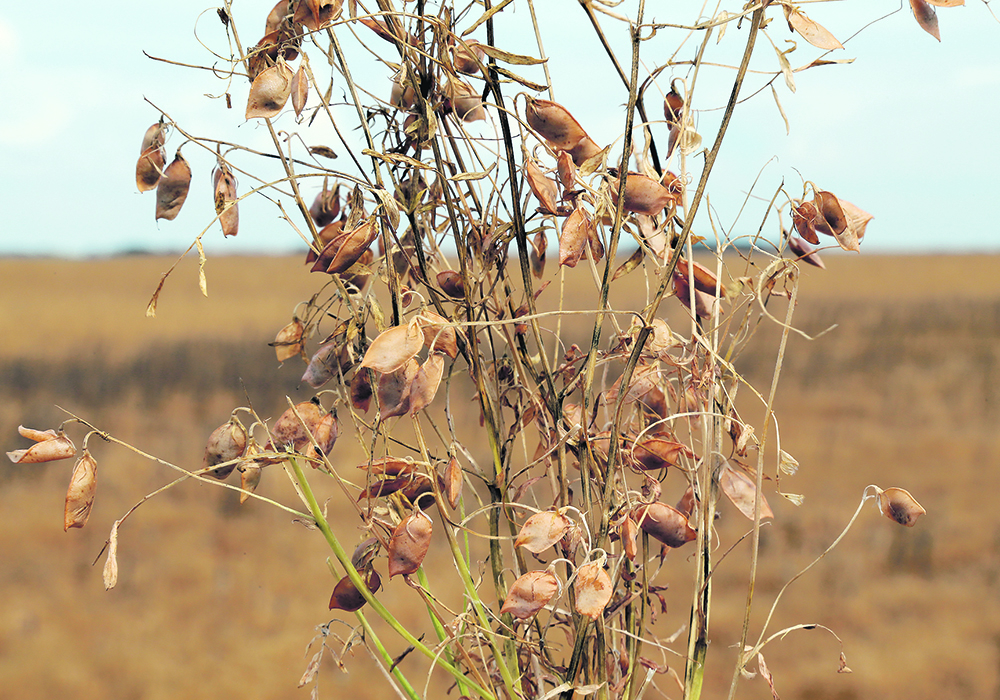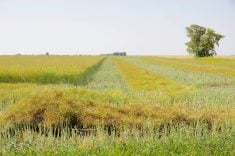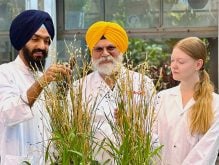WINNIPEG — Canadian pulse growers may have to wait before they can plant gene-edited peas, lentils and chickpeas.
Gene editing is a permitted technology in Canada and in India, a critical export market for pulse crops. However, researchers and pulse industry leaders are hesitant to release gene-edited varieties because they’re worried about market acceptance.
For instance, National Research Council scientists in Saskatoon have used the technology to “knock out” genes that give peas an off-taste and beany flavour. However, they have hit the brakes on the project because consumers may not accept a gene-edited pea — even one that tastes better.
Read Also

Saskatchewan puts crown land auction on hold
Auctions of Saskatchewan crown lease land are once again on hold.
“The resulting gene-edited lines (of peas) have not yet been tested for their flavour profile,” Tom Warkentin, a University of Saskatchewan plant breeder who specializes in field peas, said in an email.
“And even if they have an improved flavour profile, we won’t commercialize them in the current cautious environment around gene editing.”
The breeding tool involves changing the genetic code of a plant with technology such as CRISPR-Cas9, a technique that can cut sections of DNA. Scientists from California and France won the 2020 Nobel Prize in Chemistry for their discovery of CRISPR.
It allows scientists to precisely change a plant’s DNA to achieve desired traits, such as improved disease resistance or healthier oil in the kernel.
Federal regulators in Canada, India, the United States and other countries have approved the development of gene-edited crops, but consumers in Chicago or New Delhi may be hesitant to eat a gene-edited pulse crop from Saskatchewan.
So, Canada’s pulse industry is taking a go-slow approach. It may not release gene-edited varieties in Western Canada until there’s more certainty around market risk.
“I don’t want to say cautious. That’s a negative connotation,” said Greg Cherewyk, president of Pulse Canada.
“We have to be highly aware of how this landscape is evolving … and be on top of everything related to market acceptance.”
A portion of the lentils and peas grown on the Prairies are exported to India and China. India’s government is fully embracing gene-edited crops as a way to improve food security, Cherewyk said.
“This has become part of their national biotech development strategy. It is clearly something they see as important…. They’re looking at high vitamin A bananas and high-yielding rice, improved mustard varieties.”
As well, last year China approved the safety of a gene-edited soybean variety “as the country increasingly looks to science to boost food production,” Reuters reported.
However, government approval is not the same as consumer acceptance. Importers of pulse crops in countries such as India and China may have a better sense of public perceptions around biotechnology.
“The market acceptance piece extends to, what are our buyers hearing? What are their feelings with respect to gene edited crops?” Cherewyk said from his office in Winnipeg.
“The key thing for us is understanding … how will this be treated when it lands in one of our priority markets.”
Stuart Smyth, a University of Saskatchewan professor and expert in agri-food innovation, agreed with Cherewyk’s assessment.
There could be a gap between regulatory approval and public acceptance in places such as India.
“India over the last two years … has made strong public statements (in support of) gene editing,” Smyth said.
“(But) what are those (pulse) importers (thinking)? Will they have a different perspective on what’s coming from Canada, versus what they’re buying domestically? That’s the $64,000 question.”
Avoid risk or move first?
If India is developing gene edited crops, including peas and lentils, it seems logical that they would accept similar crops from Canada, Smyth added.
“But we know at times in agriculture, logic sometimes takes second place.”
The market uncertainty is a dilemma for crop developers and Canada’s pulse industry.
If Canada waits on the sidelines, Australia may develop a gene-edited lentil with higher yields and improved quality and capture a larger share of the Indian market.
Or India could go the other way. Importers could reject the gene-edited lentils and Australia could lose sales to India.
“This is the big challenge right now. You need to see products go through the system to fully understand how they’re going to be treated,” Cherewyk said.
However, the technology could also benefit Canadian farmers, such as a gene-edited pea with resistance to root rot.
It means Canada’s pulse industry, and the entire grain sector, needs to find a balance — make use of the best available plant breeding tools but in a way that doesn’t jeopardize market access.
“Let’s face it, the ag industry is quite excited about this technology…. Farmers are excited about having more tools in the tool box,” Cherewyk said.
“(But) the position really has to be — our key export markets are still reviewing the approach (to gene editing).”
Contact robert.arnason@producer.com


















